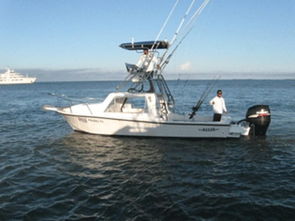Content:
Introduction: Fishing for grass carp, a species known for its resilience and fighting spirit, can be both a challenging and rewarding experience. Whether you are a seasoned angler or a beginner, mastering the art of catching grass carp requires a combination of knowledge, patience, and the right techniques. In this article, we will delve into the essential fishing techniques that can help you improve your chances of landing a majestic grass carp.
Understanding Grass Carp Behavior: Before diving into the fishing techniques, it is crucial to understand the behavior of grass carp. These fish are known for their preference for aquatic vegetation, particularly grassy areas. They are bottom feeders and often inhabit shallow waters where they can find plenty of food. Knowing this, you can choose your fishing spots more effectively.
Choosing the Right Equipment: To successfully catch grass carp, you need to equip yourself with the right gear. Here are some essential equipment items:
a. Rod and Reel: A medium-heavy to heavy-duty rod with a fast action is ideal for grass carp. The reel should be a sturdy spinning or baitcasting reel capable of handling heavy line and strong fish.
b. Line: Use a monofilament line with a breaking strength of 10 to 20 pounds. Braided line can also be used, but it may be more challenging to cast and present baits naturally.
c. Hooks: For grass carp, larger hooks, typically 1/0 to 3/0, are recommended. These hooks are strong enough to handle the fish's powerful bite and resistance.
d. Leader: A 6 to 12-inch leader made of fluorocarbon or monofilament is essential to prevent the grass carp from detecting your line.
Selecting the Perfect Bait: Grass carp are known for their voracious appetite and can be caught on a variety of baits. Here are some effective baits to consider:
a. Live Bait: Live bait such as nightcrawlers, shiners, or grasshoppers can be highly effective. These baits mimic the natural food sources of grass carp and are hard to resist.
b. Artificial Lures: Soft plastics, like Senko worms or stick baits, can also be productive. These lures can be worked through the grassy areas where grass carp are likely to be found.
c. Homemade Baits: You can create your own baits using dough or corn. These baits are durable and can be used for extended periods without getting destroyed.
Presenting the Bait: The way you present your bait is as important as the bait itself. Here are some tips for successful bait presentation:

a. Cast your bait gently into the grassy area where you suspect grass carp are lurking. Avoid casting directly into the grass, as it may scare the fish away.
b. Let your bait sink to the bottom and allow it to rest undisturbed for a few moments. Grass carp are often bottom feeders and may take a while to notice your bait.
c. Work your bait through the grass slowly and methodically. This mimicry of natural prey movement can trigger a strike.
d. If you are using live bait, keep it moving and give it a natural swimming motion. This can entice a more aggressive strike from a grass carp.
Patience and Persistence: Catching grass carp requires patience and persistence. These fish are known for their strong and tenacious fight, and they may take some time to come to the bait. Stay focused and be prepared for a long wait. Remember that the best fishing spots are often the ones that require patience to work.
Conclusion: Mastering the art of catching grass carp involves understanding their behavior, selecting the right equipment, choosing effective baits, and employing the right techniques for bait presentation. With these essential fishing techniques in your arsenal, you will be well on your way to landing a trophy grass carp. Remember to always practice responsible fishing and respect the natural habitat of these magnificent fish. Happy fishing!












